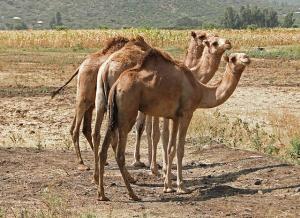Atheist anti-theist and “philosopher” Jonathan M. S. Pearce runs the blog, A Tippling Philosopher. He has encouraged me to visit his site and offer critiques, and wrote under a post dated 12-14-21: “I even need to thank the naysayers. Some of them have put up with a lot of robust pushback and still they come. Bravery or stupidity – it’s a fine line. But they are committed, and there is something to be said for taking that commitment into the lion’s den. Dave, you are welcome at my new place. Come challenge me. . . . thanks for your critiques of my pieces. Sorry I couldn’t get to more of them.” This echoes his words about me in a post dated 7-20-17, where he said, “well done . . . for coming here and suffering the slings and arrows of atheists’ wrath. . . . I commend him for getting involved and defending himself. Goodonya, mate.”
Under a post dated 1-27-22, he stated: “I do welcome disagreements because I don’t want [my blog] to [be] just an echo chamber. . . . [S]omeone like Armstrong does give me ammunition for some of my pieces!” Likewise, on 3-18-14 he proclaimed: “Dissenting views are utterly vital to being sure that you are warranted in your own beliefs and views.” And on 7-20-17: “I put my ideas and theories about the world out there for people to criticise. . . . I want to make damned sure that they are warranted. I can’t stand the idea that I could . . . believe something that is properly unwarranted. . . . What’s the point in self-delusion? . . . I put something out there, people attack it, and if it still stands, it’s pretty robust and I am happy to hold it. If not, I adapt and change my views accordingly.”
I’m delighted to oblige his wish to receive critiques and dissenting views! The rarity of his counter-replies, however, is an oddity and curiosity in light of this desire. He wrote, for example, on 11-22-19: “[I can’t be] someone who genuinely is not interested in finding out the truth about philosophy, God and everything. If I come up against any point that is even remotely problematic to my worldview, I feel the absolute necessity to bottom it out. I need to reconcile at least something; I have work to do. I cannot simply leave it as it is. . . . I would simply have to counter the arguments, or change my position.” Whatever; this hasn’t been my experience with him; only in short and infrequent spurts. I continue to offer them in any event, because they aren’t just for his sake.
Here’s what he thinks (by the way) of Jesus: “The Jesus as reported in the Gospels is so far removed from the real and historical figure of Jesus, overlaid with myth, story-telling, propaganda and evangelist agenda, that the end result is synonymous with myth. . . . I’d take mythicism over Christianity any day. And they call mythicists fringe as if the position is absurd? Now that’s crazy.” (8-2-14)
Jonathan’s words will be in blue.
*****
This is a reply to Jonathan’s article, “New Camel Domestication Research Challenges Biblical Historicity” (2-10-14).
A Tel Aviv University Press Release has built on work hinted at in Israel Finkelstein’s The Bible Unearthed which claimed that camels were not domesticated in the Ancient Near East to long after they are claimed to be existent and members of a goodly number of biblical stories. In other words, these anachronisms strongly suggest that the claims of the Bible are made up.
Sheer nonsense. As Orthodox rabbi and Bible scholar Joshua Berman wrote in his Times of Israel article, “Yes, Virginia, the Patriarchs really did ride on camels” (11-12-20):
Camels in Genesis are right where they belong. It is true that camels were not domesticated in Israel until the time of Solomon. But read Genesis carefully and you see that all its camels come from outside of Israel, from Syria, Mesopotamia, and Egypt, where there is ample evidence of domestication of the camel during the period of the patriarchs. . . .
But what about the camels that carried Joseph off to Egypt (Gen 37:25)? Here, too, Scripture tells us that the camels arrived from outside of Canaan. And just as the spices they bore surely came from the east, so, too, we may surmise, did the camels. And while Jacob rode camels on his trek back from Mesopotamia (Gen 31:17; cf. 30:43), nowhere in Genesis does anyone ride a camel originating in Canaan. In the Joseph story, the brothers descend to Egypt exclusively on donkeys (Gen 42:26–27; 43:24; 44:3, 13); that’s what people rode in Canaan. And thus when Joseph sends them to fetch Jacob, he provides them with donkeys and she-asses (Gen 45:23); those were the animals they knew how to handle. . . .
Camels in Genesis appear right where they should be in the patriarchal period — and, on that score, that’s all the news that’s fit to print.
He’s exactly right. One must distinguish between two things:
1) evidence of camels, period, vs. evidence for domesticated camels,
and
2) camels domesticated in Israel vs. camels used by Israelites / Hebrews [prior to the tenth century BC] that had come from — been domesticated — elsewhere.
Anyone can verify Rabbi Berman’s claims by closely examining (as I have done) the 55 Old Testament passages about camels, plus one reference to “dromedaries” (Is 66:20). Therefore, once one gets past their own ignorance of the biblical references to camels, one learns that nothing here is an “anachronism” or “made up.” It’s just Jonathan spinning his anti-biblical fairy tales once again.
But archaeologists have shown that camels were not domesticated in the Land of Israel until centuries after the Age of the Patriarchs (2000-1500 BCE). In addition to challenging the Bible’s historicity, this anachronism is proof that the text was compiled after the events it describes, according to researchers.
Not at all, as I shall shortly prove.
In the southern Levant, where Israel is located, the oldest known domesticated camel bones are from the Aravah Valley, which runs along the Israeli-Jordanian border from the Dead Sea to the Red Sea . . .
To determine exactly when domesticated camels appeared in the southern Levant, Sapir-Hen and Ben-Yosef used radiocarbon dating and other techniques to analyze the findings of these digs as well as several others done in the valley. In all the digs, they found that camel bones were unearthed almost exclusively in archaeological layers dating from the last third of the 10th century BCE or later . . .
The few camel bones found in earlier archaeological layers probably belonged to wild camels, which archaeologists think were in the southern Levant from the Neolithic period or even earlier. Notably, all the sites active in the 9th century in the Arava Valley had camel bones, but none of the sites that were active earlier contained them.
Having disposed of the myth of the falsely alleged claim that the Bible frequently refers to domesticated camels in Israel before the late 10th century BC, now I shall show that what archaeology has discovered (Israeli domestication “from the last third of the 10th century BCE or later”) is in remarkable agreement with what the Bible states.
1 Chronicles 5:18-21 (RSV) The Reubenites, the Gadites, and the half-tribe of Manas’seh had valiant men, who carried shield and sword, and drew the bow, expert in war, forty-four thousand seven hundred and sixty, ready for service. [19] They made war upon the Hagrites, Jetur, Naphish, and Nodab; [20] and when they received help against them, the Hagrites and all who were with them were given into their hands, for they cried to God in the battle, and he granted their entreaty because they trusted in him. [21] They carried off their livestock: fifty thousand of their camels, . . .
The appropriated camels were owned by the Hagrites (5:19), who lived east of Gilead in present-day Jordan. Note that the Israelites “carried off fifty thousand of their camels.” That’s certainly enough to start widespread domestication in Israel. This was “in the days of Jerobo’am king of Israel” (5:17). Jeroboam was the first king of the northern kingdom of Israel (as opposed to Judah). He reigned for 22 years, sometime in the last third of the 10th century BC.
In other words, this was right before the first archaeological evidence of widespread camel use in Israel, in the 9th century BC, and precisely the archaeologically determined earliest time for widespread domestication of camels in Israel.
It’s unclear exactly where this battle took place, but assuming (which seems to me a good guess) that it was in Gilead (the place between the two sides), that area extends down to the plains of Moab to the south, which end near the northern end of the Dead Sea, at Mt. Nebo. The Dead Sea is 31 miles long, and the southern portion of the Aravah Valley starts at its south end and continues 800 miles to the Red Sea.
In other words, where the Israelites likely captured the 50,000 camels (at exactly the “right time”), is likely not far from where archaeology found the earliest evidence of widespread domestication of camels in Israel. Since camels are known to particularly thrive and be useful to human beings in desert climates, it makes sense that their first widespread bones found in Israel were in the southern section, which is a desert with an arid climate.
Thus, there is no problem of biblical inaccuracy yet again; quite the contrary! The biblical text with regard to domesticated camels fits the archaeological record to a tee. But some folks are obviously slow learners (not to mention wishful thinkers and special pleaders).
***
Practical Matters: Perhaps some of my 4,000+ free online articles (the most comprehensive “one-stop” Catholic apologetics site) or fifty books have helped you (by God’s grace) to decide to become Catholic or to return to the Church, or better understand some doctrines and why we believe them.
Or you may believe my work is worthy to support for the purpose of apologetics and evangelism in general. If so, please seriously consider a much-needed financial contribution. I’m always in need of more funds: especially monthly support. “The laborer is worthy of his wages” (1 Tim 5:18, NKJV). 1 December 2021 was my 20th anniversary as a full-time Catholic apologist, and February 2022 marked the 25th anniversary of my blog.
PayPal donations are the easiest: just send to my email address: [email protected]. You’ll see the term “Catholic Used Book Service”, which is my old side-business. To learn about the different methods of contributing, including 100% tax deduction, etc., see my page: About Catholic Apologist Dave Armstrong / Donation Information. Thanks a million from the bottom of my heart!
***
Photo credit: Bernard Gagnon (11-7-12). Camels in Tigray Region, Ethiopia [Creative Commons Attribution-Share Alike 3.0 Unported, 2.5 Generic, 2.0 Generic and 1.0 Generic license / Wikimedia Commons]
***
Summary: Atheist Jonathan MS Pearce vainly tries to make the case that the Bible is “anachronistic” with regard to the domestication of camels. But he’s wrong yet again!


















